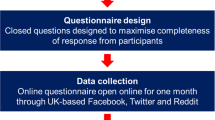Abstract
Exposure to respirable crystalline silica (RCS) remains a serious health hazard to the US mining workforce who are potentially exposed as various ore bodies are drilled, blasted, hauled by truck, crushed, screened, and transported to their destinations. The current Mine Safety and Health Administration (MSHA) permissible exposure limit (PEL) for RCS remains at approximately 100 μg/m3, but it is noteworthy that the Occupational Safety and Health Administration (OSHA) has lowered its PEL to 50 μg/m3 (with enforcement dates staggered through 2022 for various sectors), and the National Institute for Occupational Safety and Health (NIOSH) has held a 50 μg/m3 recommended standard since 1976. To examine a method for reducing RCS exposure using a NIOSH-developed video exposure monitoring (VEM) technology (referred to as Helmet-CAM), video and respirable dust concentration data were collected on eighty miners across seven unique mining sites. The data was then collated and partitioned using a thresholding scheme to determine exposures that were in excess of ten times the mean exposure for that worker. Focusing on these short duration, high magnitude exposures can provide insight to implement controls and interventions that can dramatically lower the employee’s overall average exposure. In 19 of the 80 cases analyzed, it was found that exposure could be significantly lowered by 20% or more by reducing exposures that occur during just 10 min of work per 8-hour shift. This approach provides a method to quickly analyze and determine which activities are creating the greatest health concerns. In most cases, once identified, focused control technologies or behavioral modifications can be applied to those tasks.






Similar content being viewed by others
References
MSHA (2017) MSHA Data Sets; Personal Health Samples. https://arlweb.msha.gov/OpenGovernmentData/OGIMSHA.asp.
Reed WR, Kwitowski AJ, Helfrich WJ, Cecala AB, Joy GJ (2014) Guidelines for performing a helmet-CAM Respirable dust survey and conducting subsequent analysis with the enhanced video analysis of dust exposures (EVADE) software. Pittsburgh, PA: U.S. Department of Health and Human Services, Centers for Disease Control and Prevention, National Institute for Occupational Safety and Health, DHHS (NIOSH) Publication No. 2014-133, RI 9696
Cecala AB, Reed WR, Joy GJ, Westmoreland SC, O’Brien AD (2013) Helmet-Cam: tool for assessing miners’ respirable dust exposure. Min Eng 65(9):78
Haas EJ, Cecala AB (2017) Quick fixes to improve workers’ health: results using engineering assessment technology. Min Eng 69(7):105
Scientific TF [2019]. Personal dataram™ pdr-1500 aerosol monitor.ttps://www.thermofisher.com/order/catalog/product/PDR1500
Haas EJ, Cecala AB, Hoebbel CL (2016) Using dust assessment technology to leverage mine site manager-worker communication and health behavior: a longitudinal case study. J progress res soc sci 3(1):154–167
Haas, E. and A. Cecala, Beyond assessment: Helmet-CAM technology influencing dust exposure awareness and response. Rock Products, 2015(November): p. 28–29
Haas EJ, Cecala AB, Colinet JF (2019) Comparing the implementation of two dust control technologies from a sociotechnical systems perspective. J Mining, Metallurgy Exploration 36(4):709–727
Cecala, A.B., Haas, E.J., Patts, J., Azman, A., Cole, G.P. Helmet-CAM: an innovative tool for exposure assessment of respirable dust and other contaminants. In 16th North American Mine Ventilation Symposium. Boulder. 2017. Boulder CO
Cecala AB, O’brien AD, Schall J et al (2012) Dust control handbook for industrial minerals mining and processing. In: Department of Health and Human Services, Public Health Service, Centers for Disease Control and Prevention, National Institute for Occupational Safety and Health. Research, Office of Mine Safety and Health
Williams KL, Timko RJ (1984) Performance evaluation of a real-time aerosol monitor, 8968. US Dept. of the Interior, Bureau of Mines
Reed WR, Potts JD, Cecala AB, Archer WJ (2012) Use of the 1500-pDR for gravimetric respirable dust measurements at mines. SME Trans 332:512–520
Patts JR, Tuchman DP, Rubinstein EN, Cauda EG, Cecala AB (2019) Performance comparison of real-time light scattering dust monitors across dust types and humidity levels. Mining, Metallurgy & Exploration (MME) Journal 36(4):741–749. https://doi.org/10.1007/s42461-019-0080-8
Author information
Authors and Affiliations
Corresponding author
Ethics declarations
Conflict of Interest
The authors declare that they have no conflict of interest.
Disclaimer
The findings and conclusions in this paper are those of the authors and do not necessarily represent the official position of the National Institute for Occupational Safety and Health, Centers for Disease Control and Prevention. Mention of any company or product does not constitute endorsement by NIOSH.
Additional information
Publisher’s Note
Springer Nature remains neutral with regard to jurisdictional claims in published maps and institutional affiliations.
Rights and permissions
About this article
Cite this article
Patts, J., Cecala, A. & Haas, E. Helmet-CAM: Strategically Minimizing Exposures to Respirable Dust Through Video Exposure Monitoring. Mining, Metallurgy & Exploration 37, 727–732 (2020). https://doi.org/10.1007/s42461-019-00168-7
Received:
Accepted:
Published:
Issue Date:
DOI: https://doi.org/10.1007/s42461-019-00168-7




